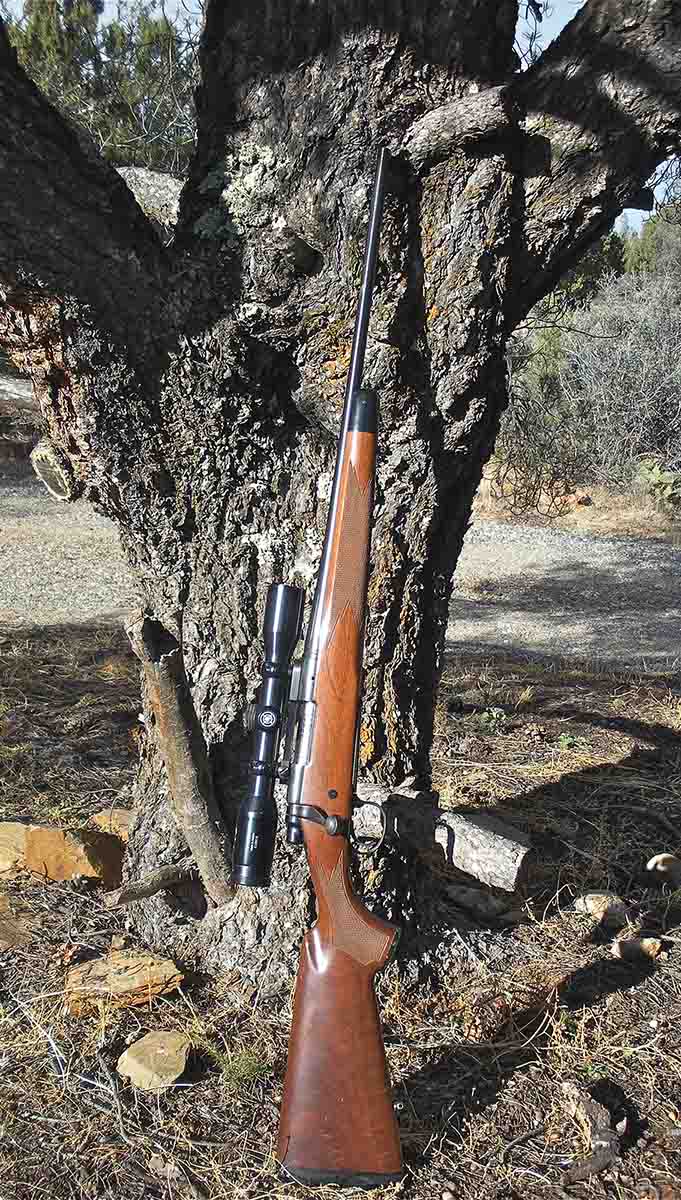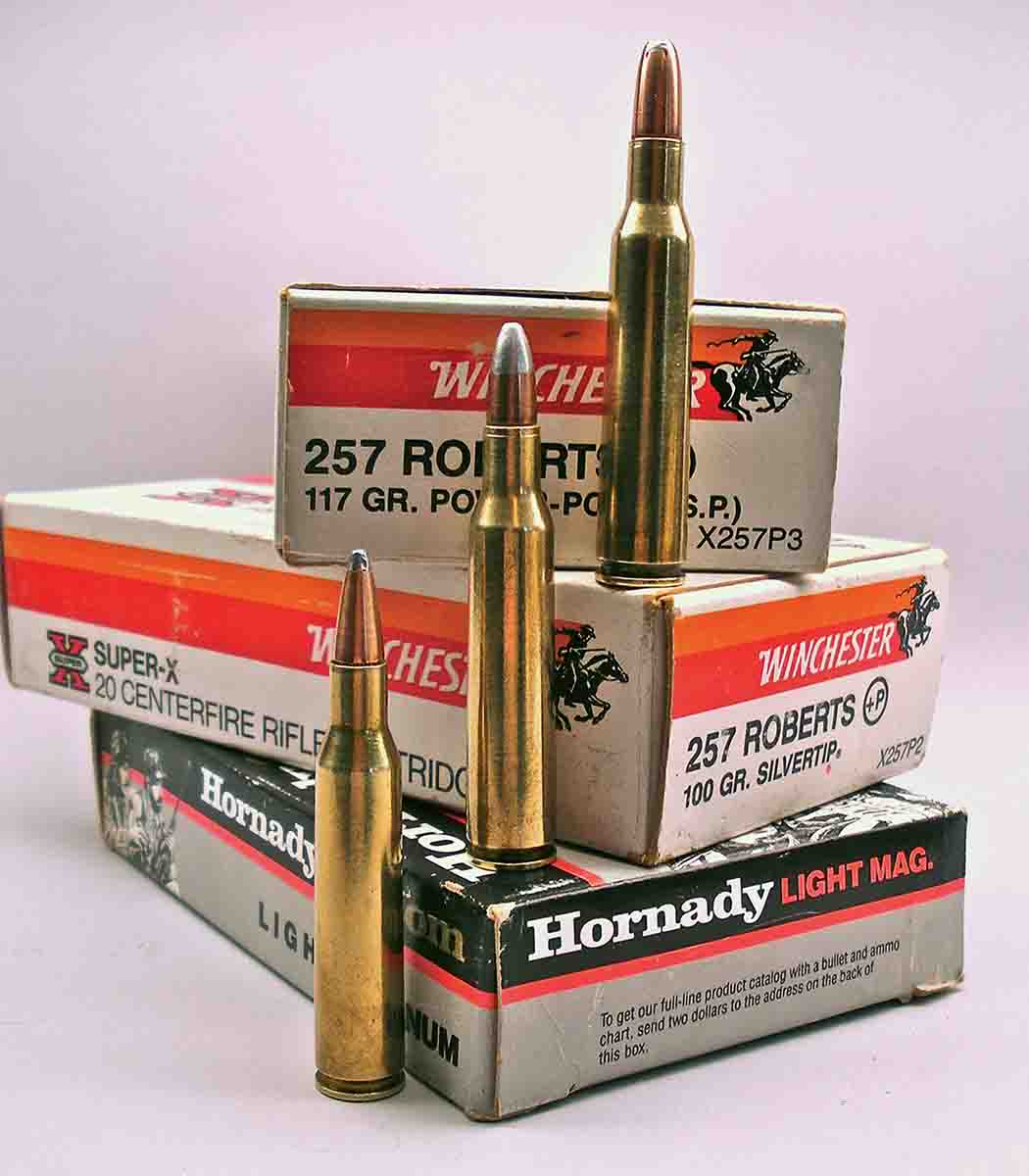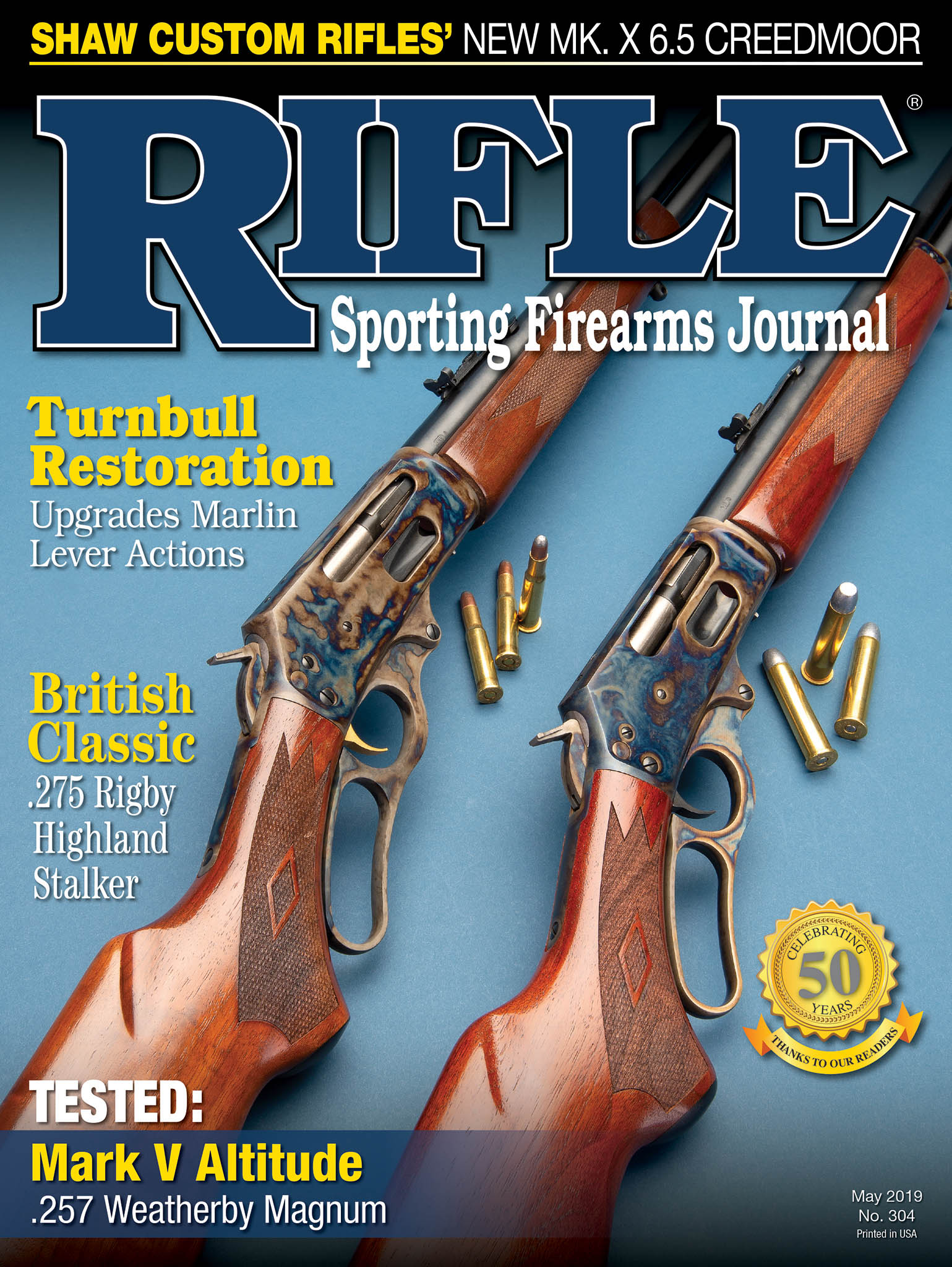Spotting Scope
.257 Roberts
column By: Dave Scovill | May, 19

The year before, we camped out in eastern Oregon on a mule deer hunt and not long after my stepfather Lester and I left camp, Mom saw a big mule deer buck walk across the road near our campsite. Lester and I had the only hunting rifles in the family at the time, leaving Mom without a rifle. The Model 760 was to prevent that from happening again.
Not long after the Model 760 was purchased, Lester took it back to the saw shop and had a Weaver one-piece tip-off scope mount with a Lyman Alaskan 4x scope added. All in all, it was a pretty good setup for Mom, although she never crossed paths with a big buck again.
With permission, I took the Model 760 out once in a while to shoot handloads stuffed with 35.5 grains of IMR-4320 and Speer 100-grain jacketed spitzers for a projected 2,635 fps muzzle velocity, a suggested starting load taken from a 1950s Lyman-Ideal manual. The fact that it was nowhere near a maximum load didn’t seem to affect how deer reacted to it. Lester loaded Mom’s hunting ammunition with the same powder charge under Nosler 115-grain Partitions.
As the years went by, I managed to take a couple of mule deer plus a few coyotes and badgers with a variety of bullet designs/weights and loads. Accuracy with Sierra 75-grain jacketed hollowpoints at roughly 3,200 fps was never an issue on high-desert jackrabbits out to maybe 300 yards or so, in spite of the fact that experts tell us a pump-action rifle is not accurate enough for that kind of shooting.
Jumping forward a couple dozen years or so as the editor at Wolfe Publishing, when I heard Remington was going to introduce its new Model 700 Mountain Rifle in .257 Roberts at the writer’s seminar in 1989, I couldn’t wait to get my hands on one. It had been far too long since I had the chance to work with a .257 Roberts.
To say the seminar in Texas was a disappointment would be an understatement; not because of the rifle, but because most of the writers in attendance seemed to have arrived with an agenda, i.e., Remington was ill-advised to chamber the .257 in a short action. From all the complaints it seemed I was the only person in the room, besides the besieged Remington folks, who was quite pleased with the standard old Roberts.
To go back to the beginning in the 1920s, Ned Roberts eventually had two designs for what was known at the time as the .25 Roberts. The first try included a shallow shoulder angle in an attempt to reduce pressure in a slightly shorter case than the parent 7x57mm Mauser. The second version increased case length to match the 7mm Mauser.
The third version by Remington, circa 1934, was the .257 Remington Roberts with a 20-degree shoulder angle moved forward to increase case capacity of the full-length 7mm Mauser case. Apparently concerned about all those older Model ’93 and ’95 Mauser rifles that were chambered for the wildcat Roberts versions, Remington held pressures to 50,000 psi, aka 46,000 CUP, and chambered it in its Model 30-S, a commercialized 1917 Enfield. Later on it was chambered in the 2.85-inch, short-action Model 722. That’s when the trouble started.
At the time, some would-be experts were of the opinion that Remington should have chambered the .257 Roberts in a longer .30-06-length action to avoid deep seating longer/heavier bullets (100 to 120 grains) and allow more room for powder under the bullet. The intended result was to develop more velocity and energy for game larger than deer, albeit seemingly unaware that only about 25 percent of the increased powder charge contributed to higher velocity, with 75 percent of the increase to maintain standard pressures.
The demand for the long action was apparently precipitated by the Winchester Model 54 and later the Model 70 that were chambered for the .257 Roberts, but both rifles could be converted to allow longer overall loaded length (OAL) by removing the magazine block, moving the bolt stop back, adding a longer follower and increasing leade length in the chamber a bit, thus accommodating an OAL to 3.0 inches or slightly more.
Claims for increased velocity as a result of increasing case capacity under those long 100- to 120-grain spitzers were awe inspiring, although few if any of those loads were pressure tested, and chronographs were as rare as honest politicians. It has occurred to me from time to time that if folks are working so hard to develop the kind of loads they believe are necessary for the game at hand, it might be best if they just get a bigger gun.

Stories in magazines over the years seemed to forget to mention that once the chamber was reamed to accommodate the longer/heaver bullets, shorter 75- to 87-grain “varmint” bullets were left to jump what amounted to a Weatherby-freebore before engaging the lands, and they simply could not be seated anywhere near the lands. In effect, the 3-inch chamber reduced the Roberts to a “one-trick pony” with 100- to 120-grain bullets, and even Ned Roberts admitted the standard 1:10 twist may not stabilize them at extended ranges where velocity drops off.
So, in 1989 that nifty, little mountain gun was ridiculed, and Remington’s representatives were treated like fools. From the heckling it appeared most of the writer contingent didn’t think much of Remington engineers. To date, however, there have been no apologies from those who currently applaud the onslaught of short-action cartridges in a variety of shapes and sizes from 6.5 to .338, with associated advantages in accuracy, strength, etc.
I wrote my column on the flight home to Prescott, Arizona, asking in general terms: If the long-action .257 Roberts is the correct solution, and the short action robs case capacity, then why are there no complaints about all the short-action cartridges, most of which are based on the .308 Winchester? Were critics attempting to demean the .257 to throw doubt on its application in the field compared to the newer .243 Winchester or .244 Remington? Probably not, but it sure appeared hypocritical and/or just plain stupid – take your pick. Of course, we have had a long-action .257, Remington’s .25-06, aka .25 Niedner, for quite some time, but that seems to be conveniently overlooked by long-action Roberts advocates.
The short-action debate came up again when Winchester introduced the .300 Winchester Short Magnum (WSM), followed by the 7mm, .270 and .325 WSMs and more recently the 6.5-300 WSM wildcat. Even before the .300 WSM hit the streets, would-be experts were at it again, complaining that bullets weighing more than 168 grains had to be seated too deeply in the case, robbing powder capacity. The upshot, some claimed, was that the WSM should have been chambered in the longer .30-06-length action.
It was John Barsness who bothered to point out that bullets were seated to the same depth in all SAAMI .30-caliber cartridges, including the .300 Winchester Magnum and .30-06 in longer 3.345-inch actions and the short action .308 Winchester. Handloaders have known for years that the bases of 190- and 200-grain Sierra MatchKings are seated nearly halfway to the primer to fit in a standard .308 Winchester chamber with few complaints, but all of a sudden the same bullet(s) are a disaster in the squatty .300 WSM, apparently ignoring the fact that the WSM case holds a lot more powder to start with. Similar events effectively killed the midsized, short-fat .284 Winchester in 1963. It appears critics are like locusts that appear every few years and then go back into hibernation.
Soon after the .300 and 7mm WSMs arrived, in-the-know experts were demanding a .338 WSM to compete with the .338 Winchester Magnum, apparently. When Winchester engineers ignored the gun press and came up with the .325 WSM, actually an 8mm, experts cried “foul” again. The .338 was better, or some such excuse, but the onslaught of critical articles never seemed to point out that all modern .338-inch spitzer bullets are designed to fit in the .338 Winchester Magnum, and the ogive is too long to fit in the 2.1-inch WSM case and still conform to the standard 2.860-inch OAL. Eventually the .338 Ruger Compact Magnum case was introduced to avoid modifying bullets to fit in 2.860-inch actions. No doubt, someone called for that cartridge to be chambered in long actions; I just missed it.
Interestingly enough, about the time the Model 700 .257 Roberts arrived in early 1990, Winchester came out with 100-grain Silvertip and 117-grain Power-Point +P loads that average 3,041 fps from the 22-inch Remington barrel. Federal and Hornady also introduced +P-type loads. So whatever shadows were left hanging over the old Roberts in the past no longer mattered.
All in all, having used most of the short-action cartridges in the Lower 48, Alaska and Africa, there is little if anything to indicate that one cartridge or another, say a .338 Ruger or a .325 WSM, would be more effective on heavier game like elk, moose, zebra, etc., if the bullets were seated to 3.0 inches OAL in a medium-length action over a few more grains of powder.
Realistically, if the critics are ignored for a moment, there is no way to determine field conditions or how and where an animal might show up, with the possible exception of hunting from treestands or ground blinds, so there is little reason to visualize some set of ideal circumstances where 100 additional fps might turn a potential disaster into a success. There are also times when too much velocity at close range can backfire on you.


